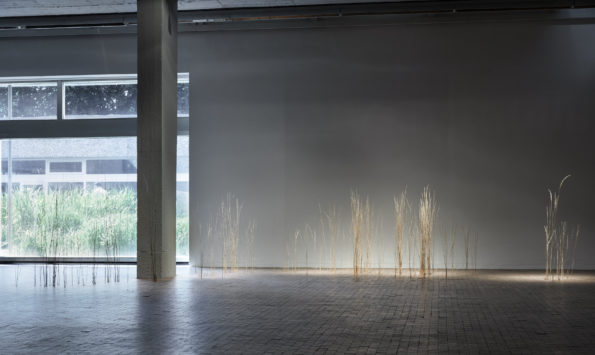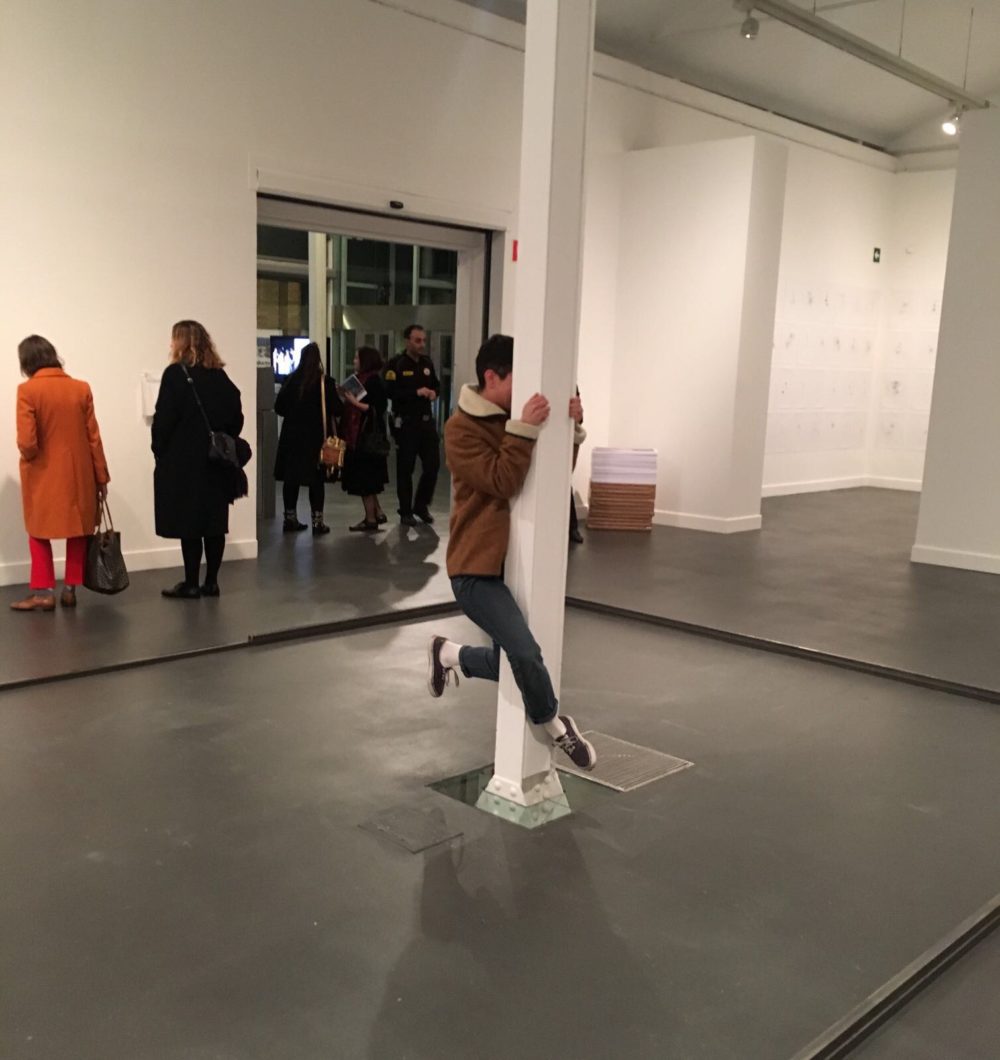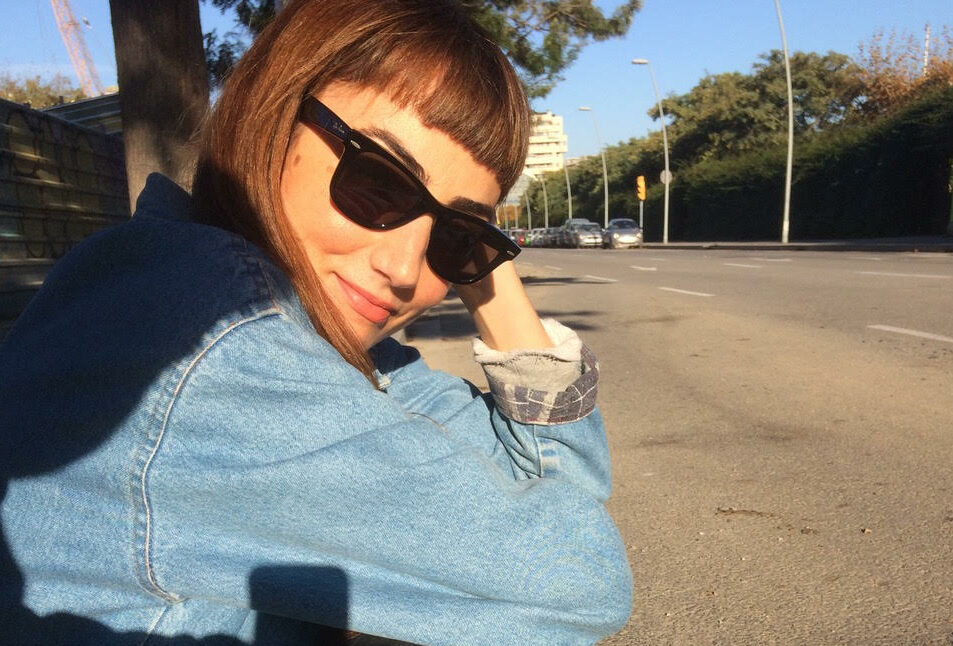Search
To search for an exact match, type the word or phrase you want in quotation marks.
A*DESK has been offering since 2002 contents about criticism and contemporary art. A*DESK has become consolidated thanks to all those who have believed in the project, all those who have followed us, debating, participating and collaborating. Many people have collaborated with A*DESK, and continue to do so. Their efforts, knowledge and belief in the project are what make it grow internationally. At A*DESK we have also generated work for over one hundred professionals in culture, from small collaborations with reviews and classes, to more prolonged and intense collaborations.
At A*DESK we believe in the need for free and universal access to culture and knowledge. We want to carry on being independent, remaining open to more ideas and opinions. If you believe in A*DESK, we need your backing to be able to continue. You can now participate in the project by supporting it. You can choose how much you want to contribute to the project.
You can decide how much you want to bring to the project.

*Cover: Okwui Okpokwasili, Sitting on a Man’s Head, 2018, KW Institute for Contemporary Art. Photo: Timo Ohler
Carolina Jiménez. A cheap Ryanair or EasyJet flight, a press pass printed by photocopier, a friendly put-you-up and a half-full item of hand luggage with room for catalogues, publications and commemorative brochures — the ‘biennial’ kit. This summer, the festival destinations of the European art world are Palermo with Manifesta 12, and Berlin with its tenth Biennale. As I don’t know anyone in Palermo who could put me up (I made a promise not to succumb again to Airbnb) and I distrust the Manifesta model (even more), the Biennale was the perfect excuse to travel to the city that had been my home for five years. The truth is I felt like returning to Berlin after a year in Barcelona and meet up with Sonia Fernández Pan, a dear friend who has just moved there and with whom I had previously agreed to write this text. [From this point on we shall refer to each other in the first person.] However, I wasn’t too sure about the Biennale. The shadow of documenta 14 in Kassel and its questionable manoeuvre in Athens was still too long, and the possibility of the Biennale being a post-colonial effort or a lesson in de-colonial justice imparted from central Europe generated a certain degree of scepticism.
We Don’t Need Another Hero, curated by Gabi Ngcobo in collaboration with Nomaduma Rosa Masilela, Serubiri Moses, Thiago de Paula Souza and Yvette Mutumba, is a biennial conceived as a denial. What it rejects is chiefly more of the same: institutional critique as a discursive mechanism to fill international art events, public panels and programmes with academic airs (yes, the title is taken from Tina Turner’s popular homonymous song) regarding post-colonialism and identity politics, the false promises and strategies of heroic rejection shaped as a normative horizon. Artur Żmijewski’s grand yet unsuccessful political provocation of 2012, Juan Gaitán’s déjà-vu proposal of the eighth Biennale and the bold ergonomic cynicism shown by DIS’s conception of a post-everything world on the verge of collapse in 2016 are history. What this year’s biennial suggests, with its good and bad choices (so be it!), is a space for other more vulnerable and subtle complicities, a place for other affective possibilities with and from art. A proposal that whisperingly calls for a paused rhythm, a careful and sensuous approach, a slow permeable listening to the works and to our bodies in connection – or inter-action – with them.
“We are not here to educate people about postcoloniality, decoloniality. We refuse to provide this as a service – to educate, to help decipher, to correct”.
Gabi Ngcobo
Sonia Fernández Pan. You reveal art’s contribution to the economy of tourism, which is very obvious in biennials and so-called international art events, and I remember one of the strikes proposed by Maciunas, the one to do with the number of flights involved in the traffic provoked by these events and their impact on the environment (which is quite small in comparison with the continuous traffic caused by other sorts of goods). And this leads me to the question of class, that is so present in our conversations and in our lives, in connection with viewers and access to ‘the international’, a term that refers to a social status rather than a territory. In other words, who can and who can’t go to a biennial, and what the implications are of having or not having access to the aesthetic, economic and social experience of the international, for instance, for those of us who work in the art world. In my case, continuing in the first person as you suggest, this is the first Berlin Biennale I’ve seen, and that’s because I now happen to live here. I find large art events difficult, for one reason on account of the impossibility of putting into practice the fiction of a super-observer that criticism constructs around them. And if I find it hard to form an opinion about something of such a fragmentary nature, I don’t even want to imagine how it would be to try and make sense of it from within. That explains why curatorial statements of this sort are often abstract, imprecise or vague and appear to say more that they really do. And yet, the size of the Berlin Biennale seems to me to be almost political: an event that goes virtually unnoticed, that doesn’t impose on the everyday life of the city, although this is probably a result of its budget and the very dimensions of a city as vast as Berlin rather than of a modest intention. While its statement partakes of the ambiguity of this sort of writing, I admit that it touches on problems that do not cease to generate further problems, on a personal and a collective level: the strategic indifference to complex subjectivities (in the return to nationalist essentialisms we are currently experiencing with the World Cup football competition held parallel to the Biennale, triggering identity checks); the generalised states of collective psychosis (the privilege of one reality over many and the paralysis induced by too much awareness); the impossibility of making sense (inside and outside the Biennale), epistemological rigidity and its toxic effects (contradiction as a rule rather than an exception), or the voluntary loss of a figure as patriarchal as that of the hero, which takes me back to Ursula K. Le Guin and her necessary carrier bag as opposed to the violent spear of the leader.
C. J.There’s room for all sorts of things in this carrier bag. If you agree, I’ll begin this text by returning to the itinerary of our visit. We set out on our tour of the biennale at the Akademie der Künste, a Brutalist building designed by Werner Düttmann in the late fifties in this hidden spot among the trees in Tiergarten’s Hansaviertel. The photos on my mobile phone help me remember that we noticed the powerful delicacy of Trans:plant — the key lies in the name of the installation by Sara Haq divided up into small doses throughout the rooms, that enters into dialogue with the naturalist drawings by Ana Mendieta (#dóndeestáAnaMendieta), with the almost flying reed structures that accompany the song in video form by Minia Biabiany and, above all, with the subtle photographs and collages by Özlem Altin in the first-floor garden, or the massive sculptures by Óscar Murillo in the lower patio. Opposite, the installation of the Again/Noch einmalvideo by Mario Pfeifer about what could have been a ‘fair judgement’ – and the (im)possibility of such a thing – in the true case of the death of an Iraqi refugee in a supermarket in east Germany in 2016.

Sara Haq, Trans:plant, 2018. Akademie der Künste (Hanseatenweg). Photo: Timo Ohler
S. F. P.According to Siri Hustvdet, memory is flux and doesn’t exist in concrete form in any specific place. Mine is also triggered by reading to you and speaking among ourselves in parallel to this text. However recent the Biennale experience is, forgetfulness also forms a part of it. When you speak of the paused rhythm of this Biennale, along with our slow rhythm that day, like a shared affection we see Sitting on a Man’s Headby Okwui Okpokwasili at KW, a performance we formed a part of for a few minutes and in which I discovered how complicated it actually is to walk very slowly. I was also very much aware of the functioning of my body in connection with an activity that is so common I had hardly thought of it, an engrossed and attentive perception, similar to that of the dance floor of one of the previous nights. I recall that one of the performers asked us what we considered important before entering that space made of delicate plastic curtains, and our intimate conversation on sorority – with no knowledge at the time of the sociopolitical context in which the work is set – with a stranger who finally invited us to take off our shoes and imitate her way of walking while the other two bodies in the space were able to move deliberately and sing at the same time.
Sitting on a Man’s Head turns to an old tactic of the same name used by Igbo women as a form of protest, consisting of publicly and collectively shaming a man in his workplace or at home, singing and dancing, but also introducing gestures of humiliation and offence against the man in question during the process. One of the effects of British – Western and patriarchal – colonialism was the illegalisation of this practice of resistance and balance of power by Igbo women, socially discrediting them. As I write this, and without wanting to establish a crude comparison, I can’t stop thinking of similar tactics that we have put into practice in recent months, from reading groups where we ‘come together, find each other, and call out’[1] in our own way, to the Twitter hashtag #cuéntalo that has made us all (or at least many of us) so aware that male privileges are practiced from different forms of daily and naturalised violence against our bodies and our lives. I admit that, even though we continue to visit the rest of the KW galleries, for me the biennial came to an end – unfairly – when we left that temporary room.
C. J. Being invited to take part in this flux of voices, movements, smiles and sensations located almost involuntarily on the first floor was, no doubt, the climax of our journey through the KW. Before then I remember us being very attentive to each of the many details of the great work Untitled (Of Occult Instability) [Feelings]by Dineo Sheshee Bopape on the ground floor. And I think of the warm orange light of the installation as the threshold of a composition made up of mountains of bricks, slides projecting messages on a T-shirt, a paper serviette on which the titles of the songs that could be heard there had been handwritten, and a two-channel video presented on two flat screens carefully placed on the floor with scenes of the Bois de Vincennes, a park on the outskirts of Paris that in the eighteenth century had housed human zoos and the artist has managed to contemplate as a space of ongoing ruin.
We move from Sheshee Bopape’s orange to the dark light with the reflections of a disco ball in the work Mastur Bar by Fabiana Faleiros (aka Lady Incentivo) in the basement of the KW.The Mastur Bar is a mobile bar that celebrates female masturbation. To the rhythm of Donna Summer’s I Feel Love, at the Mastur Bar we are offered objects, textures, sounds, voices, moans, whispers and technicians to establish a connection with ourselves in a sort of audiovisual exploration of our different movements as we masturbate, analysing self-pleasure over and above the gesture that connects us to our inner selves and our desires. I remember us sitting together, interacting with the Mastur Bar, and I can’t help thinking of the words by Audre Lorde about eroticism as the power derived from sharing an activity with someone else. Sharing in a physical, emotional, psychic or intellectual way creates a bridge between sharers that could be the basis for understanding that which isn’t shared and reduces the threat of difference, according to Lorde. For this reason, our erotic recognition engenders our deepest knowledge and gives us power. A power that the hetero-patriarchal order has always tried to combat, to the point of making us distrust ourselves, feel despicable and suspect for making use of our eroticism. And then, our reading groups, the #cuéntalo Twitter hashtag you mentioned earlier appear again, I agree with Lorde, ‘so many silences we still have to break’.

Fabiana Faleiros, Mastur Bar, 2015-18, KW Institute for Contemporary Art. Photo: Edouard Fraipont
S.F.P. While we were writing this text I decided to complete the spaces we still had left, ending up at the ZK/U with Tony Coke’s installation. For me it was an emotional experience, erotic even, finding a text about house music and many of its sociopolitical implications as incisive as it is fragmentary, placing the issue of race at the heart of its analysis. A culture that is black in the DJ’s booth but not on the dance floor, for instance. Or that builds some of its terms from a misogynist position. Coming back and reading you, I realise that even here dance culture continues to be read from a masculine gaze that barely includes the dancing bodies and the synergies derived from them. Just as it doesn’t include women’s names. I suppose it’s difficult to include the body when history is read as a text in which the first absent bodies are those of its performers. However, I would like to conclude with one of the few sentences that embraced this somatic dimension of house culture in a room where the music produced this body absent from the history of art — the body of the spectator. It’s nothing new to declare that for us music, gesture, dance are forms of communication, just as important as the gift of speech [or writing].
[1] The description of the piece by Nomaduma Rosa Masilela ends with the following sentence: ‘Both score and embodied space work in the service of resistance and self-preservation, so we can “come together, find each other, and call out”.’

artwriter_curator_esnorquelmaker_chocolateresearcher_technodancer__bikeenthusiast_coffeeaddicted_

Carolina Jiménez is a curator and researcher.
"A desk is a dangerous place from which to watch the world" (John Le Carré)